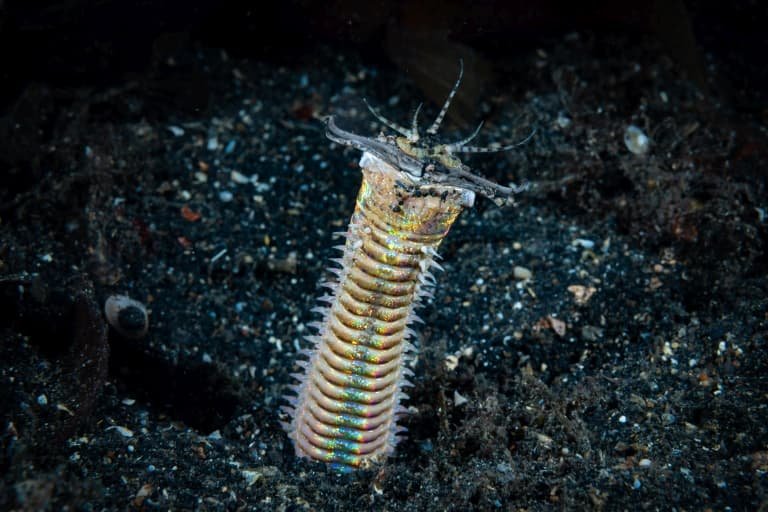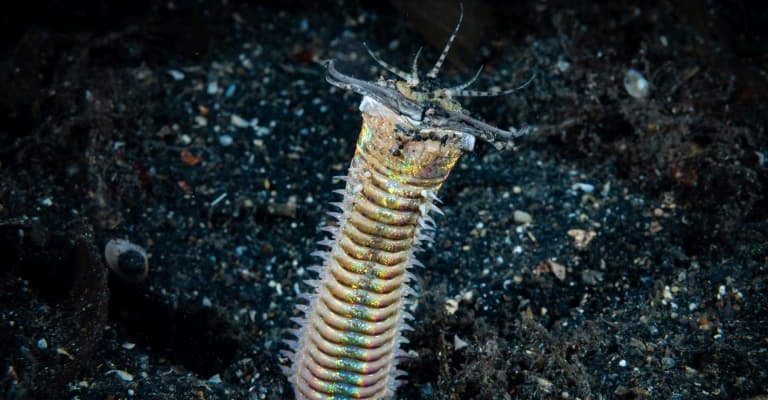
Bobbit worms are a type of polychaete worm, and they’re known for their incredible ability to ambush unsuspecting fish and other small creatures. They do this by burrowing into the ocean floor and waiting patiently, much like a lioness lying in tall grass. It raises a fun question—what senses do these worms use to locate their next meal? Do they have a nose like we do, or do they rely on something else entirely? Here’s the thing—bobbit worms rely on their environment in a unique way to detect prey. Let’s explore how these incredible creatures experience the world around them.
Understanding Bobbit Worms
Bobbit worms belong to the family *Eunicidae* and inhabit tropical and subtropical waters. They live in burrows made in the ocean floor, which helps them stay hidden from predators and increases their chances of a successful ambush on prey. When we think of these worms, we often imagine them as fierce predators, and rightly so. Their large jaws can snap shut at lightning speed, making them formidable hunters.
Interestingly, bobbit worms also have some cool adaptations that contribute to their hunting prowess. Their bodies are segmented, and they feature colorful bristles called chaetae. These bristles help them move through the water and maintain their burrows. Plus, their vibrant colors serve as both camouflage and warning signals to potential predators. So, not only are they beautiful, but they’re also well-equipped for survival.
Most importantly, bobbit worms have evolved to be incredibly effective hunters. They can detect vibrations and chemical signals in the water, which plays a crucial role in their hunting strategy. This leads us to the question of how they chemically sense their prey.
How Do Bobbit Worms Detect Their Prey?
Bobbit worms have several ways to detect their prey, which primarily involve chemical sensing. Unlike humans and many other animals, they don’t rely on a traditional sense of smell. Instead, they use specialized cells to detect chemicals in the water. These cells are capable of picking up on the presence of potential food sources, such as fish or other marine creatures.
When a fish swims nearby, it releases tiny chemical signals into the water. These signals can travel great distances, and bobbit worms have adapted to pick them up. It’s a bit like when you catch a whiff of freshly baked cookies from the kitchen, even though you’re in another room. That enticing scent leads you straight to the source. Similarly, the bobbit worm uses chemical cues to identify where its next meal might be swimming.
Additionally, bobbit worms are sensitive to environmental changes. They can detect shifts in water currents, temperature, and even light. This heightened sense of awareness helps them determine when and where to strike their prey. So, when you think about how bobbit worms sense their food, it’s a remarkable blend of chemical detection and environmental awareness.
The Role of Chemoreceptors
Within the realm of bobbit worms, chemoreceptors play a crucial role. These specialized cells or sensory organs help them detect specific chemicals in the water. Chemoreceptors can respond to various substances—whether it’s the scent of a potential meal or signals from other organisms in the habitat.
Here’s an interesting tidbit: these chemoreceptors are also vital in communication among marine creatures. While bobbit worms primarily use them for hunting, many aquatic animals rely on similar systems to communicate, find mates, or even warn others of danger. It’s fascinating to think that bobbit worms are part of a larger web of life in the ocean, and their ability to sense chemicals helps them contribute to this ecosystem.
In the case of bobbit worms, their chemoreceptors are often located on their tentacles or antennae, which they extend from their burrows. As they reach out into the water, they can effectively sample their surroundings and pick up on chemical cues. This technique allows them to be highly effective hunters, ensuring they never miss an opportunity for a meal.
The Ambush Technique
Once a bobbit worm has detected the presence of potential prey using its chemoreceptors, it initiates its ambush technique. This process is a bit like a well-rehearsed theater performance. The worm lies in wait, completely camouflaged in its sandy burrow, waiting for the perfect moment to strike.
When a fish swims too close, the bobbit worm’s reaction is quick and precise. It extends its jaws at incredible speed, catching the unsuspecting fish off guard. The ambush technique showcases the worm’s evolutionary adaptations, combining its chemical and physical senses for a successful hunt.
This hunting method is not just remarkable; it speaks to the adaptability of life in our oceans. Bobbit worms are masters of stealth and precision—a testament to how creatures can evolve to thrive in their environments.
Why Bobbit Worms Matter in the Ecosystem
You might be asking yourself, “Why should we care about bobbit worms?” Well, these creatures play a vital role in their ecosystems. By preying on small fish and other marine creatures, bobbit worms help maintain balance in the food web. They ensure that no single species dominates an area, promoting biodiversity.
Moreover, bobbit worms contribute to the health of the ocean floor. As they burrow through the substrate, they aerate the sand and sediment, allowing for better water circulation and nutrient distribution. This process can have positive effects on plant life and other organisms living in the area.
As part of the benthic community, bobbit worms also serve as food for larger predators, like fish and sea turtles. So, while bobbit worms might seem scary or strange, they are essential players in the health of marine environments.
Bobbit worms are truly fascinating creatures, showcasing nature’s incredible adaptations. Their unique method of sensing prey chemically sets them apart in the ocean world. By understanding how these worms operate, we not only appreciate their role in the ecosystem but also marvel at the myriad of ways life evolves to survive.
These worms remind us that there’s so much more to marine life than meets the eye. The next time you think about the ocean, remember the bobbit worm lurking beneath the sand, waiting for that perfect moment to strike. Their story is a small piece of the vast puzzle of life under the waves, and it’s one that deserves our attention and respect.

